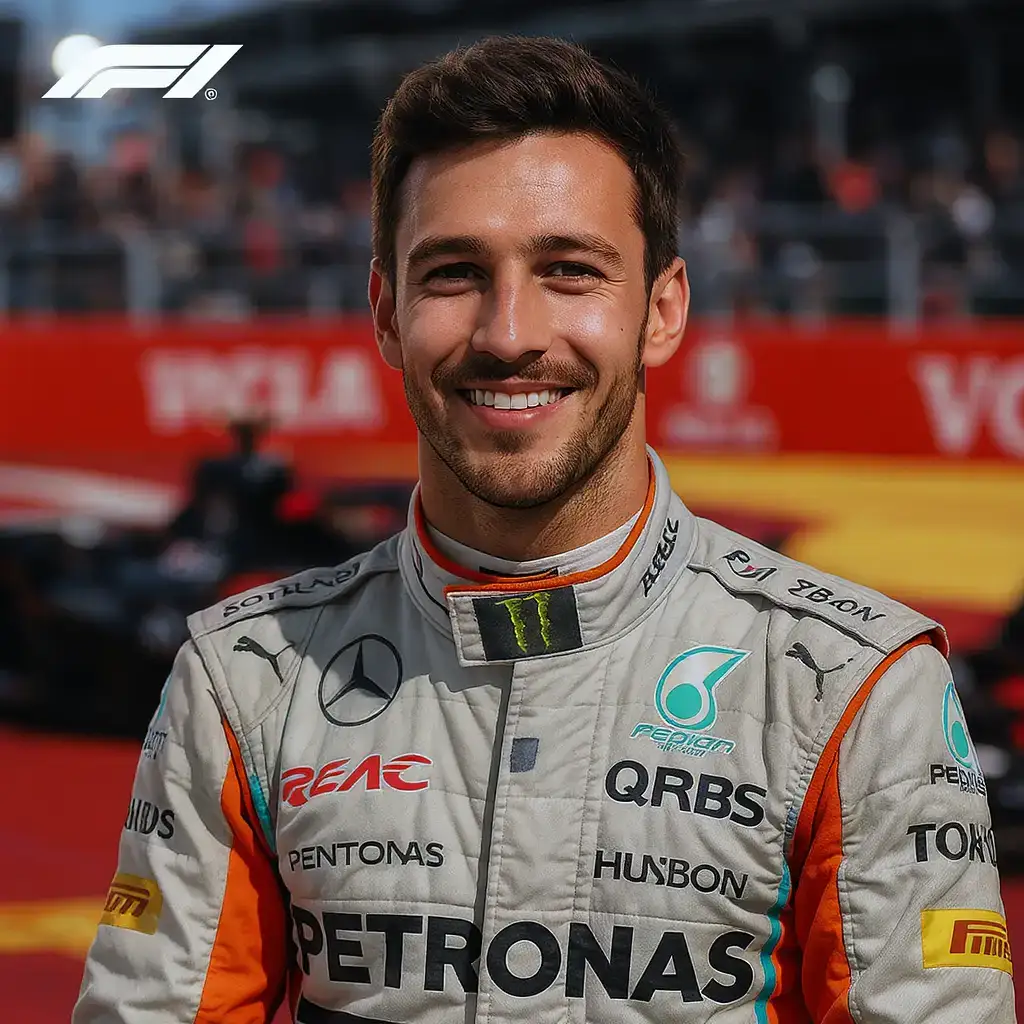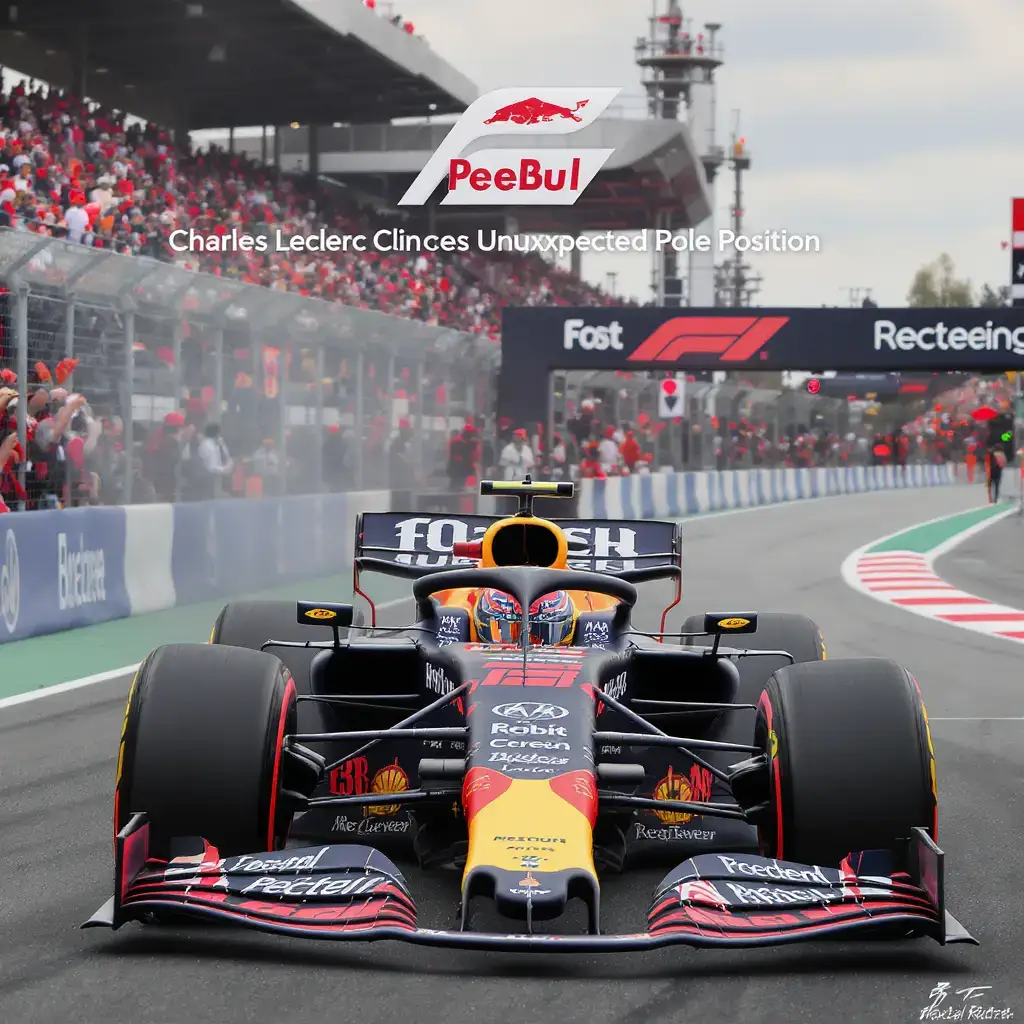Handicap International
Charles Leclerc Clinches Unexpected Pole Position at the Hungarian Grand Prix

Introduction to the Hungarian Grand Prix
The Hungarian Grand Prix, held at the iconic Hungaroring, witnessed a thrilling session of qualifying that culminated in an unexpected result. The race weekend took place from August 1 to August 3, with the main event scheduled to commence at 14:00 BST on Sunday. This particular venue has a reputation for being challenging, often testing the mettle of drivers due to its tight and twisty layout.
Leclerc’s Stunning Performance
In a remarkable display of skill and determination, Ferrari's Charles Leclerc snatched pole position during the qualifying rounds, managing to outperform his competitors when expectations seemed otherwise. His time of 1:17.345 placed him narrowly ahead of McLaren’s rising star, Oscar Piastri, by a mere 0.026 seconds. This achievement was particularly striking given that Leclerc had struggled to match the pace of the McLarens in earlier sessions.
McLaren's Competitive Edge
Oscar Piastri and his teammate, Lando Norris, have emerged as formidable contenders this season, contributing significantly to McLaren's resurgence in the sport. Norris, who is currently trailing in the championship standings by 16 points, finished just 0.015 seconds behind his teammate, showcasing the narrow margins that can define qualifying sessions in Formula 1. The McLaren team has shown consistent improvement, making their performance noteworthy in this tightly contested season.
Mercedes and Aston Martin's Performance
Mercedes driver George Russell secured fourth position, indicating that the team is still in the competitive mix, albeit not at the forefront. Meanwhile, Aston Martin’s Fernando Alonso and Lance Stroll delivered outstanding results, securing the fifth and sixth positions, respectively. This marked a significant turnaround for Aston Martin, who had faced challenges in previous races, particularly at the Belgian Grand Prix where they struggled to make an impact.

The Disappointment of Lewis Hamilton
In stark contrast to Leclerc's triumph, Hamilton's performance fell short of expectations. The seasoned driver was unable to progress past the second session of qualifying, ultimately starting in 12th place. After the session, Hamilton expressed his frustration candidly, stating, "I'm just useless," reflecting the disappointment felt after what he deemed a poor performance. The gap to the top drivers was a mere 0.015 seconds, yet it still felt monumental to him.
Max Verstappen’s Struggles
Defending champion Max Verstappen faced an uphill battle throughout the weekend, finding himself in eighth place, directly behind Sauber's Gabriel Bortoleto. The Red Bull team had been grappling with car balance issues, which hindered their performance significantly compared to their usual dominance. Verstappen noted that despite numerous adjustments, they were unable to rectify the grip problems affecting both the front and rear of the car.
The Unexpected Conditions in Qualifying
Leclerc’s pole position came as a shock, particularly because of the fluctuating conditions during the qualifying sessions. At critical moments, Leclerc was informed by his engineer, Bryan Bozzi, that he had taken pole, prompting an incredulous reaction. He exclaimed, "What? Mamma mia!" showcasing his disbelief at the turn of events. After stepping out of his car, he expressed his astonishment further, reflecting on the unpredictability of Formula 1. He described the qualifying session as extremely challenging and admitted to not fully understanding how they managed to clinch pole.
Piastri and Norris on the Changing Conditions
Both Piastri and Norris commented on the unpredictable nature of the wind during qualifying, which shifted dramatically from Q2 to Q3. Piastri remarked on the difficulty of judging the circuit's conditions accurately due to these changes. He acknowledged that Leclerc had been notably quick throughout the weekend, hinting at the possibility that a Ferrari might be on the front row, but he did not anticipate being second behind Leclerc. Norris praised Leclerc's last lap performance, attributing his pole position to risking more in the changing conditions, which ultimately paid off. According to Hungarian GP: Charles Leclerc takes surprise pole position - BBC Sport,
Aston Martin’s Resurgence
The impressive results from Aston Martin highlighted their adaptability and growth throughout the season. After finishing last on the grid in Belgium, the team made significant strides forward, showcasing the importance of understanding how different circuits affect car performance. Alonso stated, "Since P1, we felt competitive," indicating a renewed confidence in their capabilities. He emphasized the need for the team to analyze what enabled their performance and apply those lessons to future races.
The Importance of the Hungaroring Layout
The Hungaroring's layout is renowned for its tight corners and limited overtaking opportunities, making qualifying a crucial element of race strategy. Teams that can optimize their setup for such conditions often enjoy significant advantages. Leclerc's ability to navigate these challenges set him apart, illustrating the importance of technical skill and strategic thinking in the sport.
Concluding Thoughts
The Hungarian Grand Prix qualifying session served as a reminder of the intricacies involved in Formula 1, where split-second decisions and environmental factors can drastically alter the outcome. Charles Leclerc's unexpected pole position not only highlights his talent but also underscores the unpredictability of the sport. As teams and drivers prepare for the main event, all eyes will be on how they adapt their strategies to this challenging circuit. The race promises to be a thrilling showcase of speed, skill, and strategy, with drivers eager to capitalize on their qualifying positions.
Looking Ahead to the Race
As anticipation builds for the race, fans and teams alike are eager to see how the drivers will tackle the challenges of the Hungaroring. With Leclerc in prime position, the question remains whether he can convert his pole into a win or if the formidable McLaren duo can capitalize on any opportunities. The contrasting fortunes of the teams will undoubtedly add to the excitement, making the Hungarian Grand Prix a must-watch event for motorsport enthusiasts.